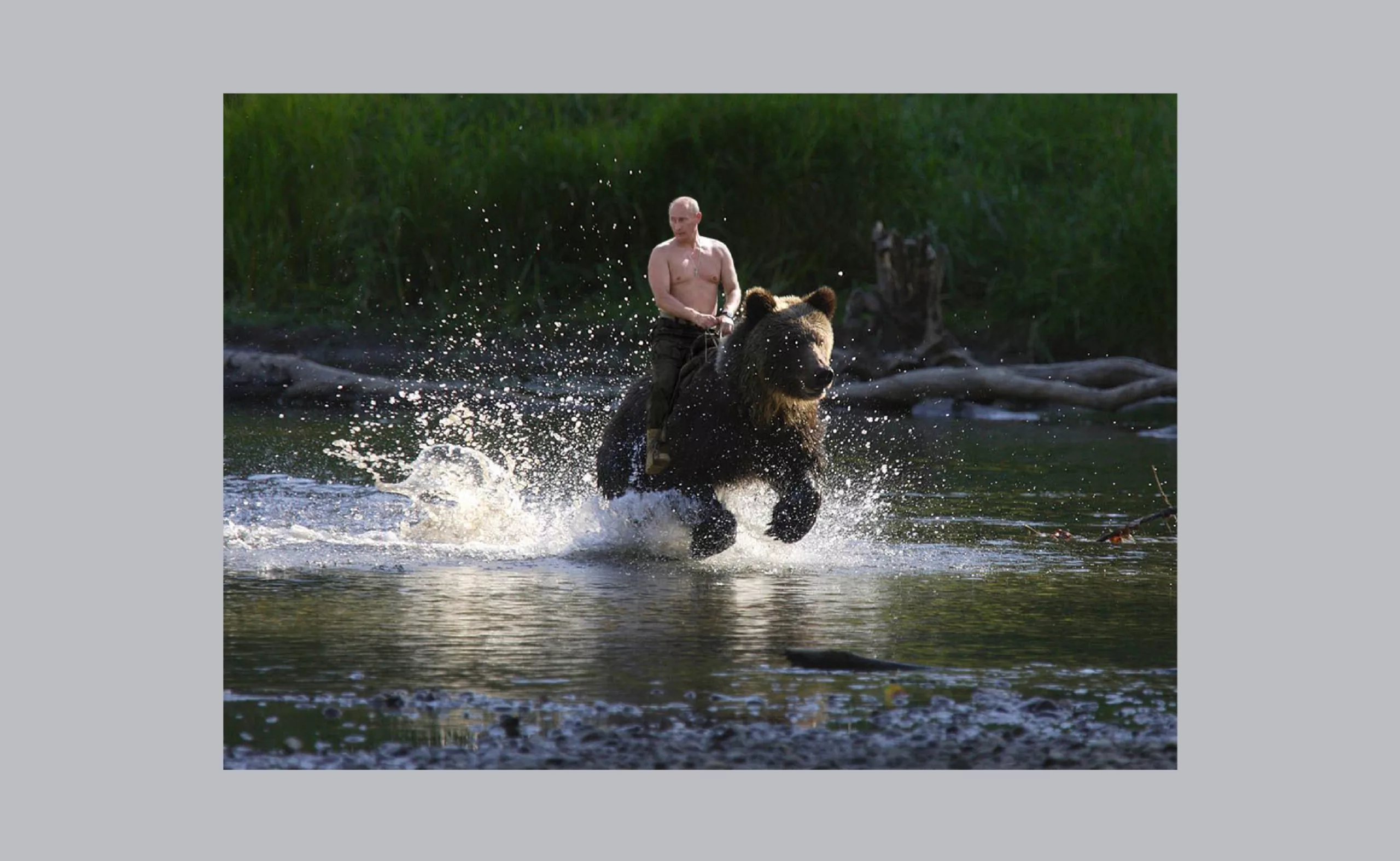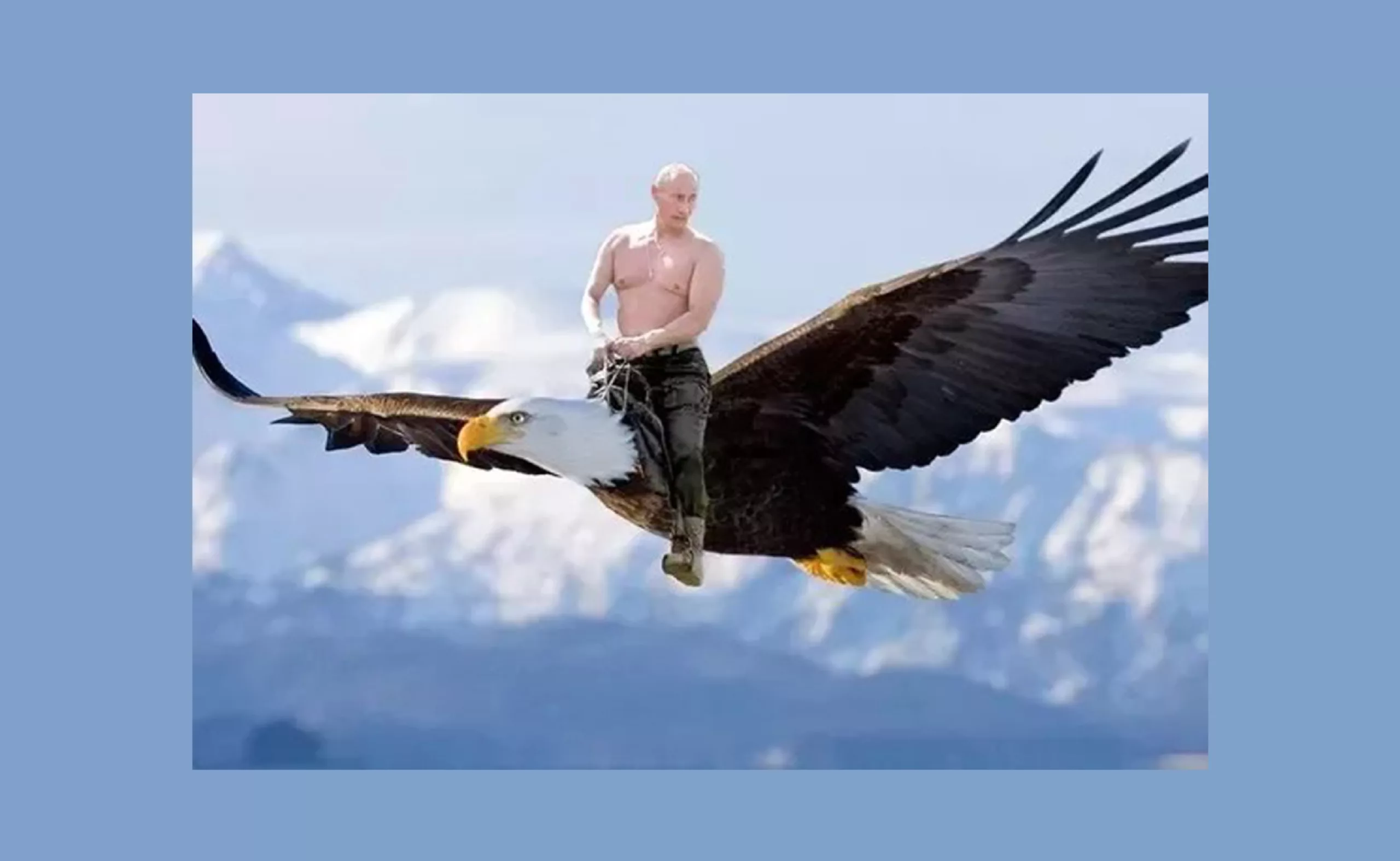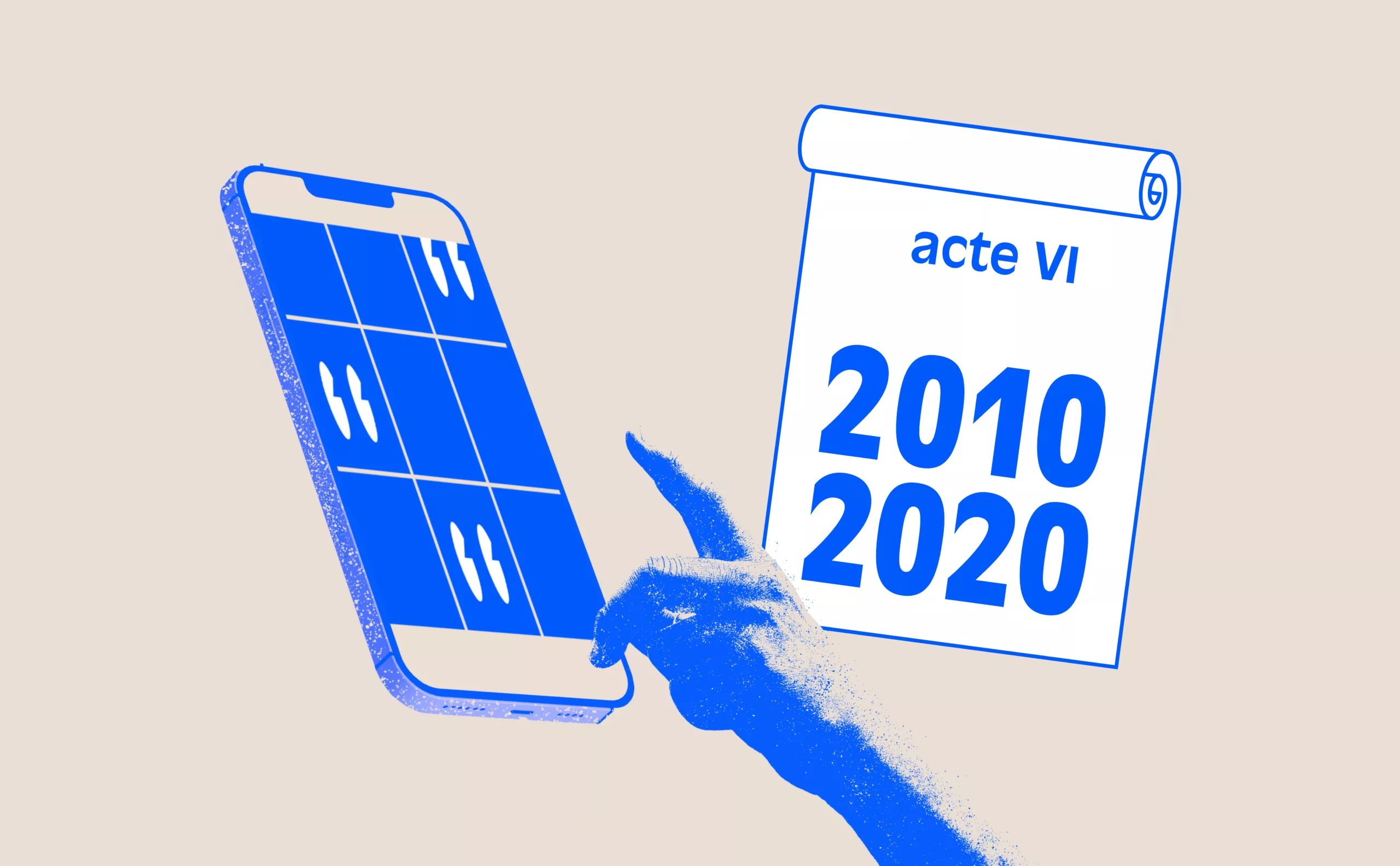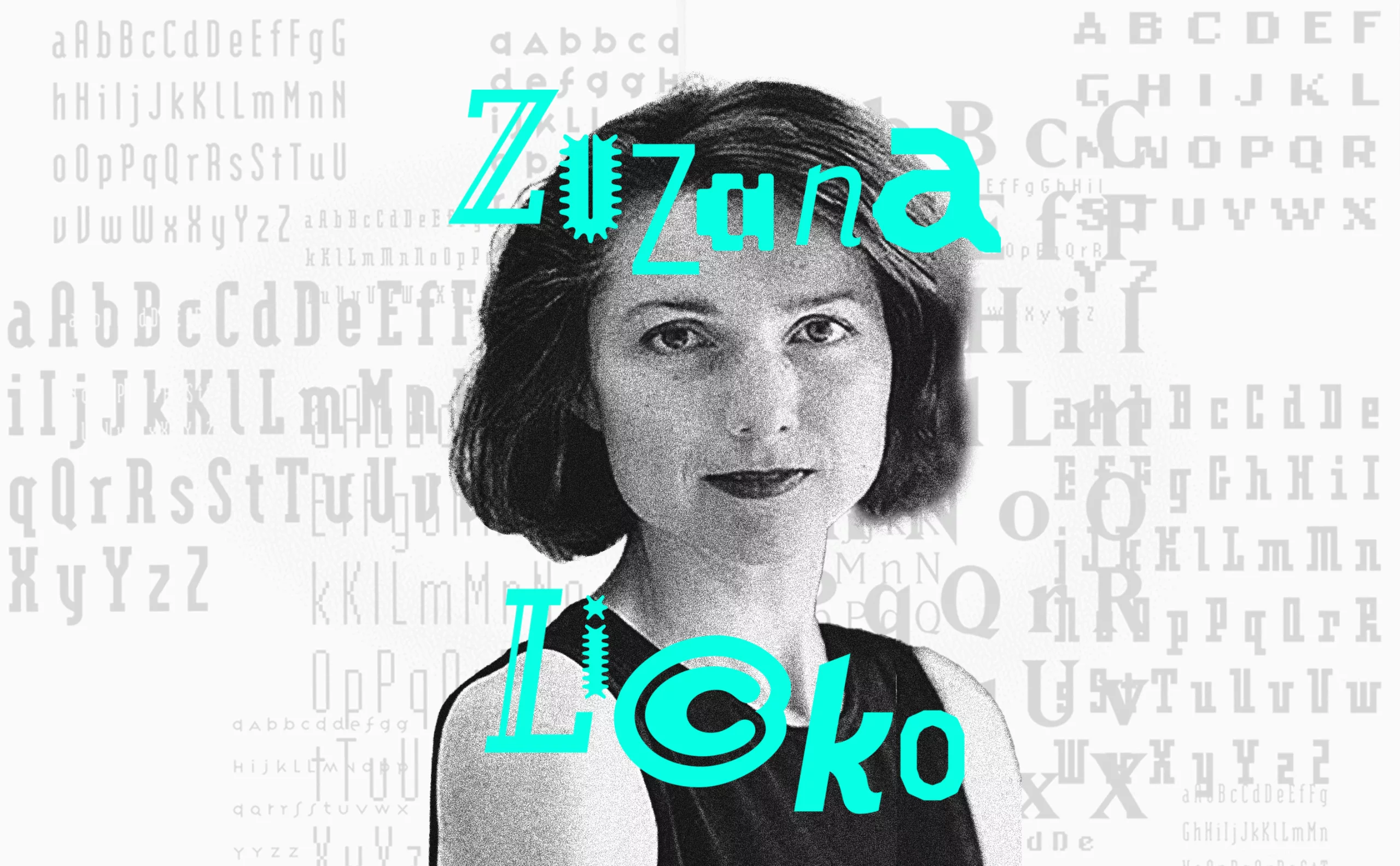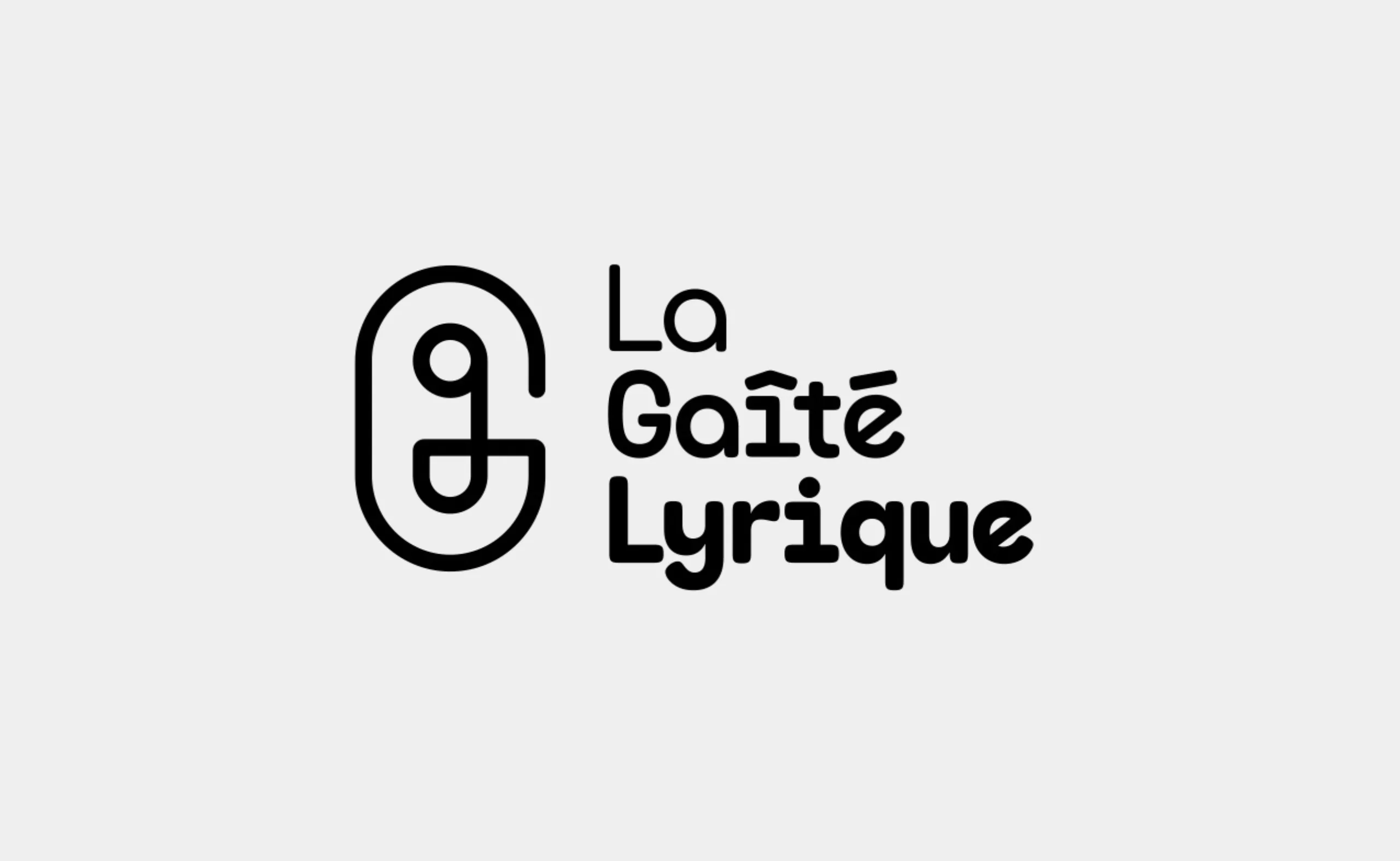Who controls the memes, controls the universe
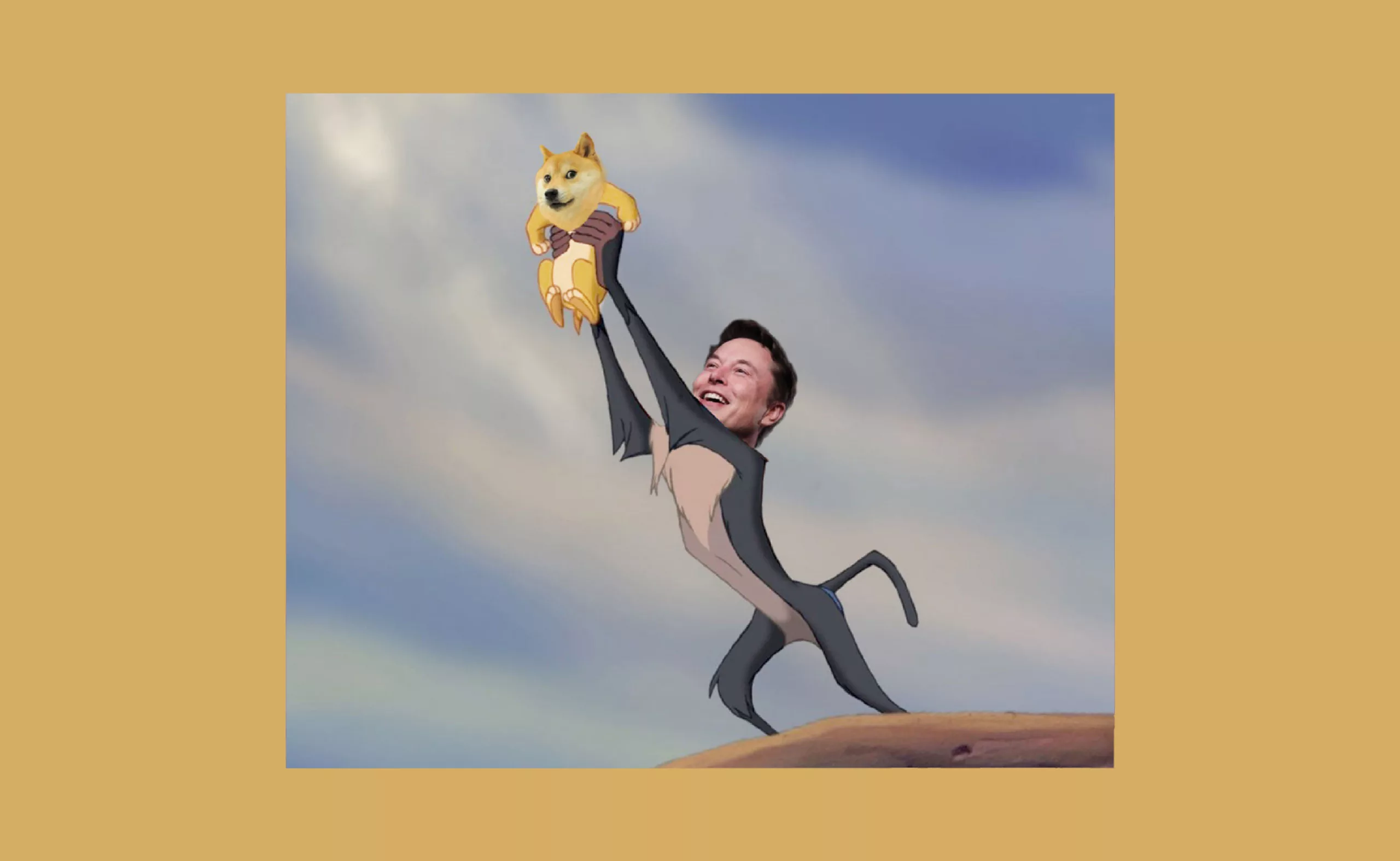
Who controls the memes controls the universe. Contents with drawer references, taken from popular culture, addressed to insiders: only the real ones know. Under the guise of a good joke lies a serious reality, which can turn into a monster.
We owe the quote “who controls the memes controls the universe” to Elon Musk, itself taken from the book Dune by Frank Herbert. In the original quote, it is the spice -the mixture- geriatric that allows to control the universe because it promotes the powers of prescience and the almost eternal life. But before we talk about the powers of Elon Musk and memes, let’s look back at the evolution of this popular digital language.
All your memes are belong to the 90’s-2000’s
End of the 90s, beginnings of the Internet: online video games, msn messenger, discussion forums, 3D, e-mail chains… All the ingredients are there to create the first memes, these viral phenomena created and shared by a digitally connected community, conveyed on visual media. The principle is simple: find a striking and telling image and spread it to as many people as possible. The most common form of the meme is an image to which text is added, but it can also take the form of a video or gif. The meme, like the Internet which spreads it, connects people between them.
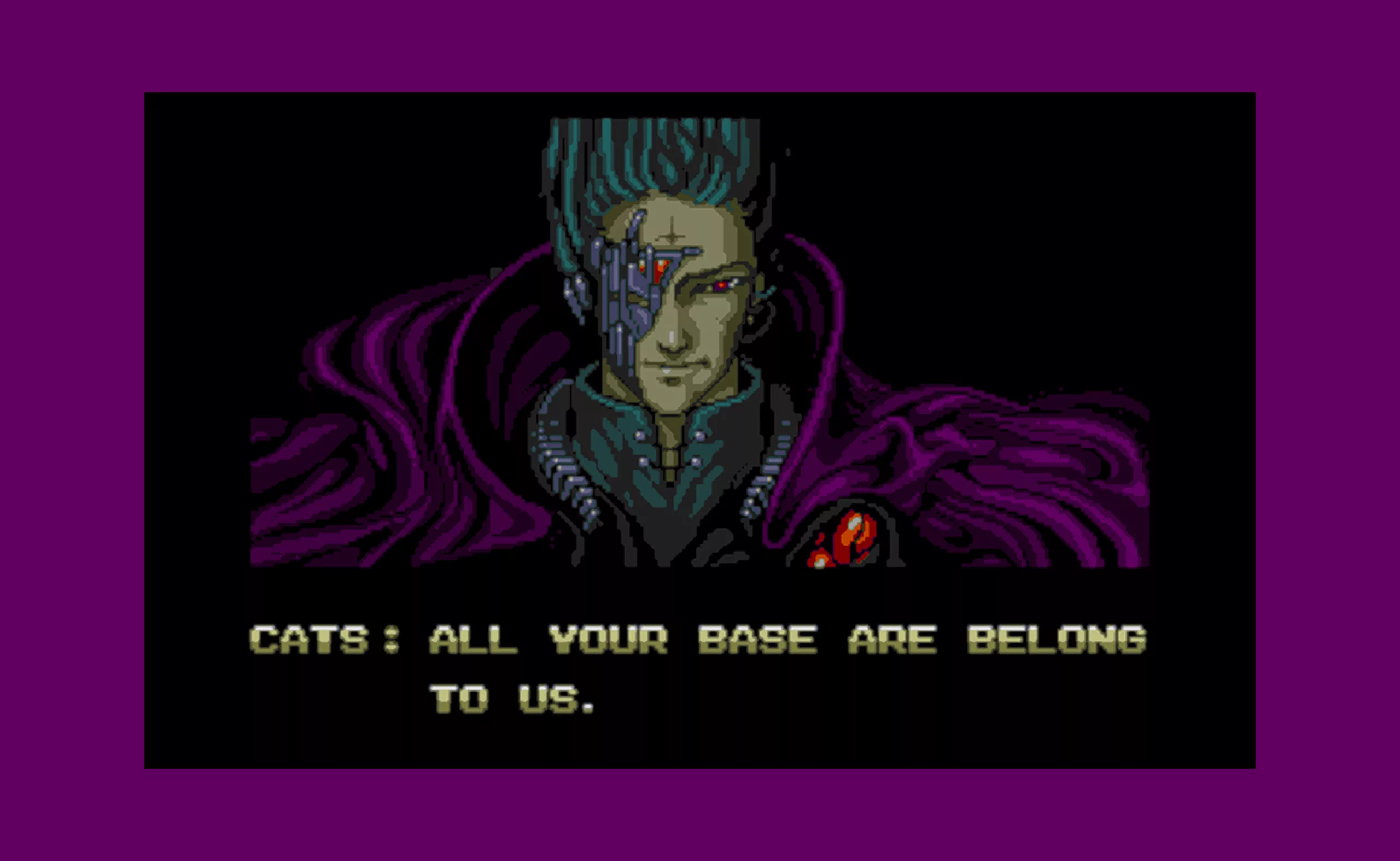
The first meme you probably encountered if you are over 30 years old was the “dancing baby” or “chacha baby”. This 3D animation of a baby in diapers was waddling around in email chains, messengers and screensavers, before appearing in an episode of Ally McBeal.
Later, it was All Your Base Are Belong to Us (aka AYBABTU) that launched the geek memes. The phrase -translated literally and therefore perfectly absurd (all your bases are belong to us)- is taken from the introduction of a Japanese video game. Nowadays, memes are no longer just popular: they have become a language with their own graphic codes and culture.
In meme language, retro is topical
The peak of the massive Photoshop hacking in the late 90s allowed the meme culture to spread widely in the computer world. The initial visuals fall into the hands of people who don’t necessarily have graphic skills, and it shows. Little by little, memes become reproducible and modifiable by everyone.
Today, there are meme generators, based on the most iconic images (do yourself a favor, we’re counting on you). With the rise of connected smartphones, 4G and social networking apps (Instagram, Snapchat), the movement has grown considerably in the 2010 decade, but the graphic style has not changed. It has even become its signature.
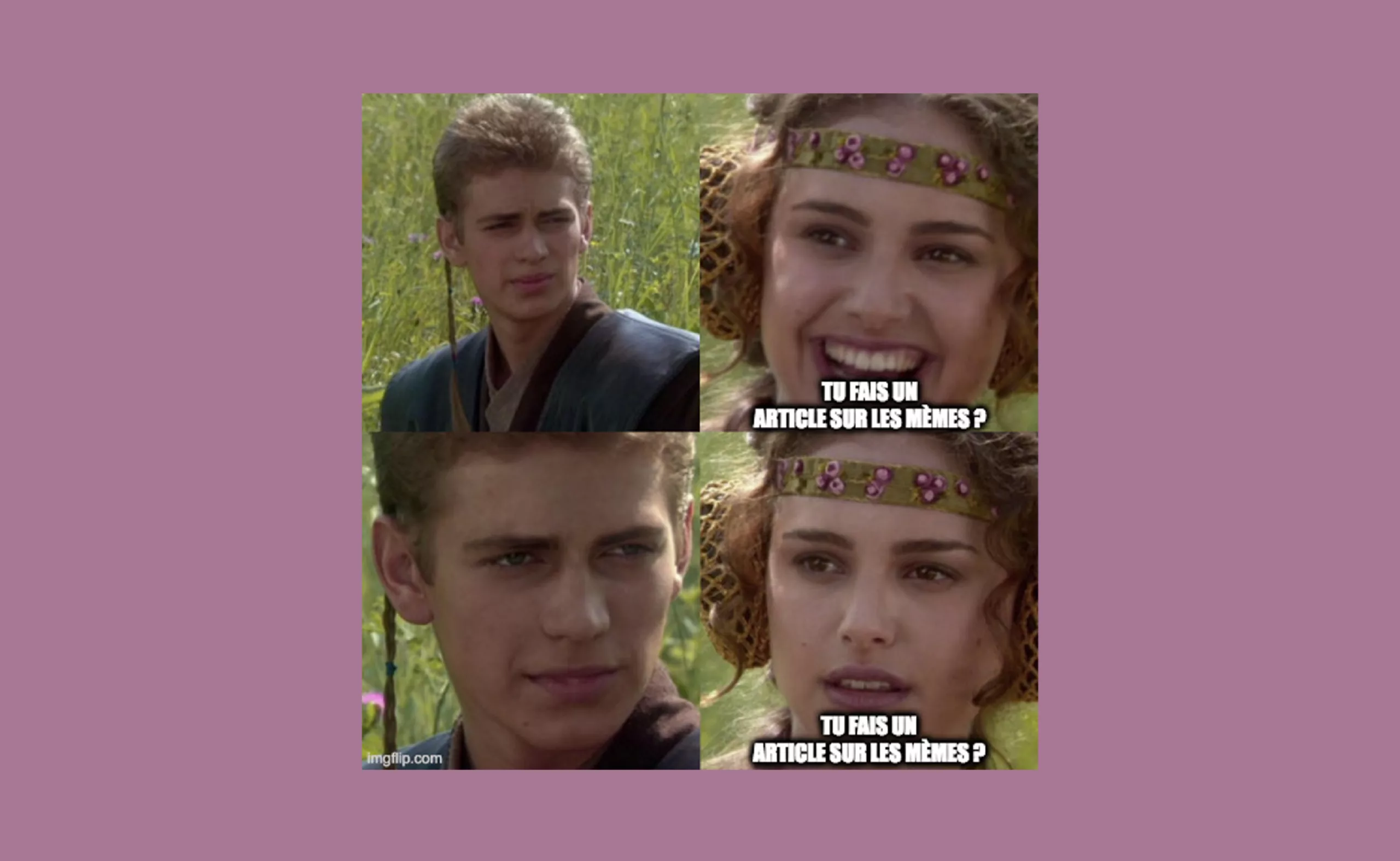
Detached from any form of aestheticism, the memes cultivate in spite of themselves a certain kitsch, pop, and “normcore” side (the style opposite of the style) far from the advertising standards. In the realm of memes, the style of the 90’s-2000’s is still king. Memes are built on generic images, such as stock photos (distracted boyfriend) or Wikipedia images, (wikihowmuseum), the perfect medium for standardized and sanitized emotion, a veritable pantomime or photo novel of the digital age in which every emotion is exacerbated. Many memes are simple photos added by users who share animals (doge, grumpy cat, nyan cat…), human beings (success kid, disaster girl, Yao Ming), food etc.
Very often, the aesthetic or overworked memes are mocked or even reworked as “less beautiful”. There is even a digital tool to “fry” memes so that they become of lesser quality: meme deep fryer. Because a good meme is not a good-looking meme, it is above all a popular meme. The graphic supports vary from one meme to another, while keeping the same model: text on a visual. Let’s take the memes and start again!
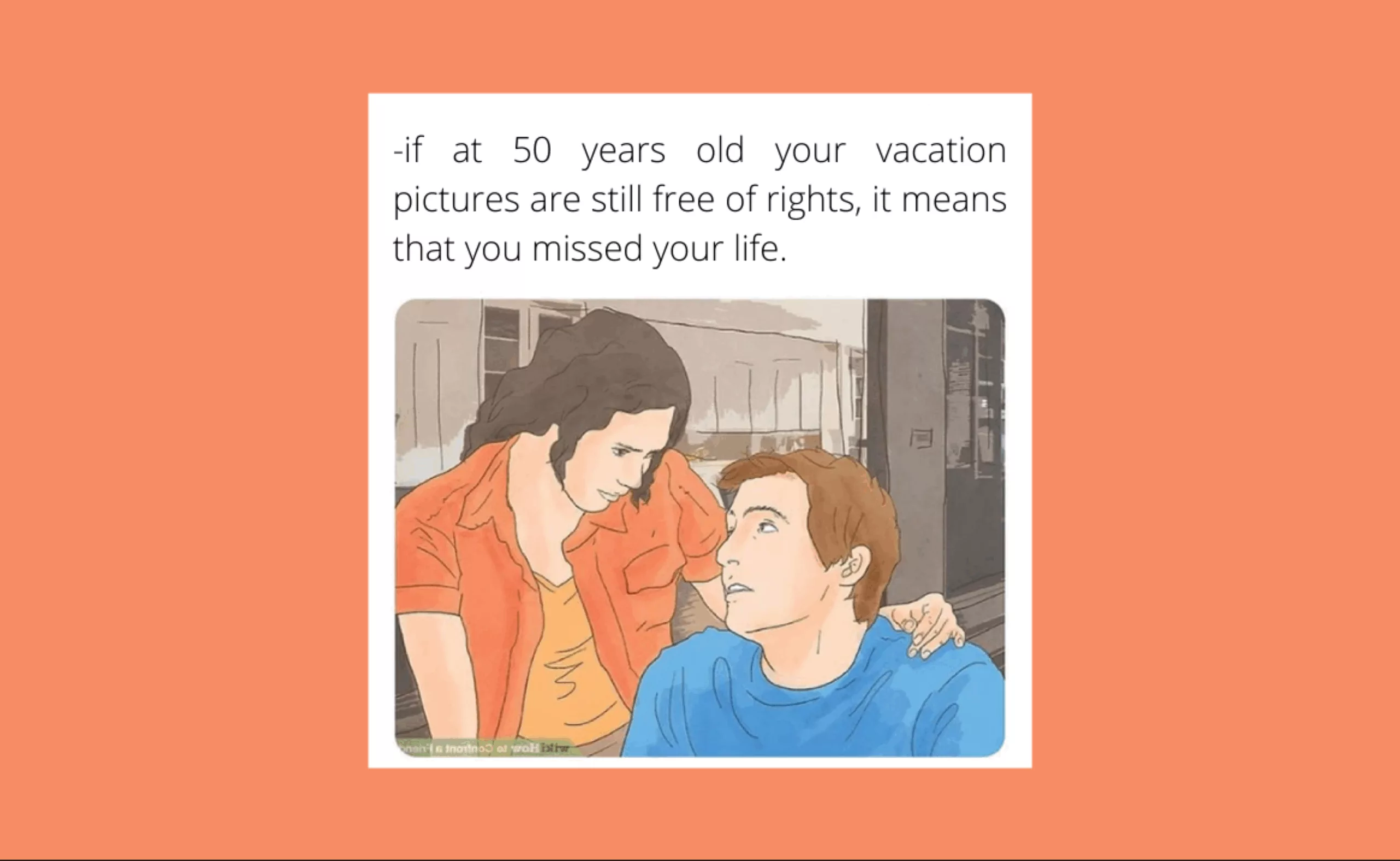
Most memes are based on current events, films, books or games that are popular and are thus better adapted to deflect. In February 2021 the campaign on E. Macron’s barrier gestures “air the room” or “wear the mask” (see original image below) gave rise to the Republigram generator. In France, Martine’s cover generator was a sensation a few years ago. In the age of social networks and instantaneousness, any event can trigger a cascade of memes. One thing is for sure: memes and the messages they convey must be understood in the second… the infinite scroll generation obliges! It doesn’t matter what the medium is, as long as you have the ref (otherwise the joke falls flat), the important thing is that the meme can be diverted or reused by those who want to, and then spread as massively as possible.
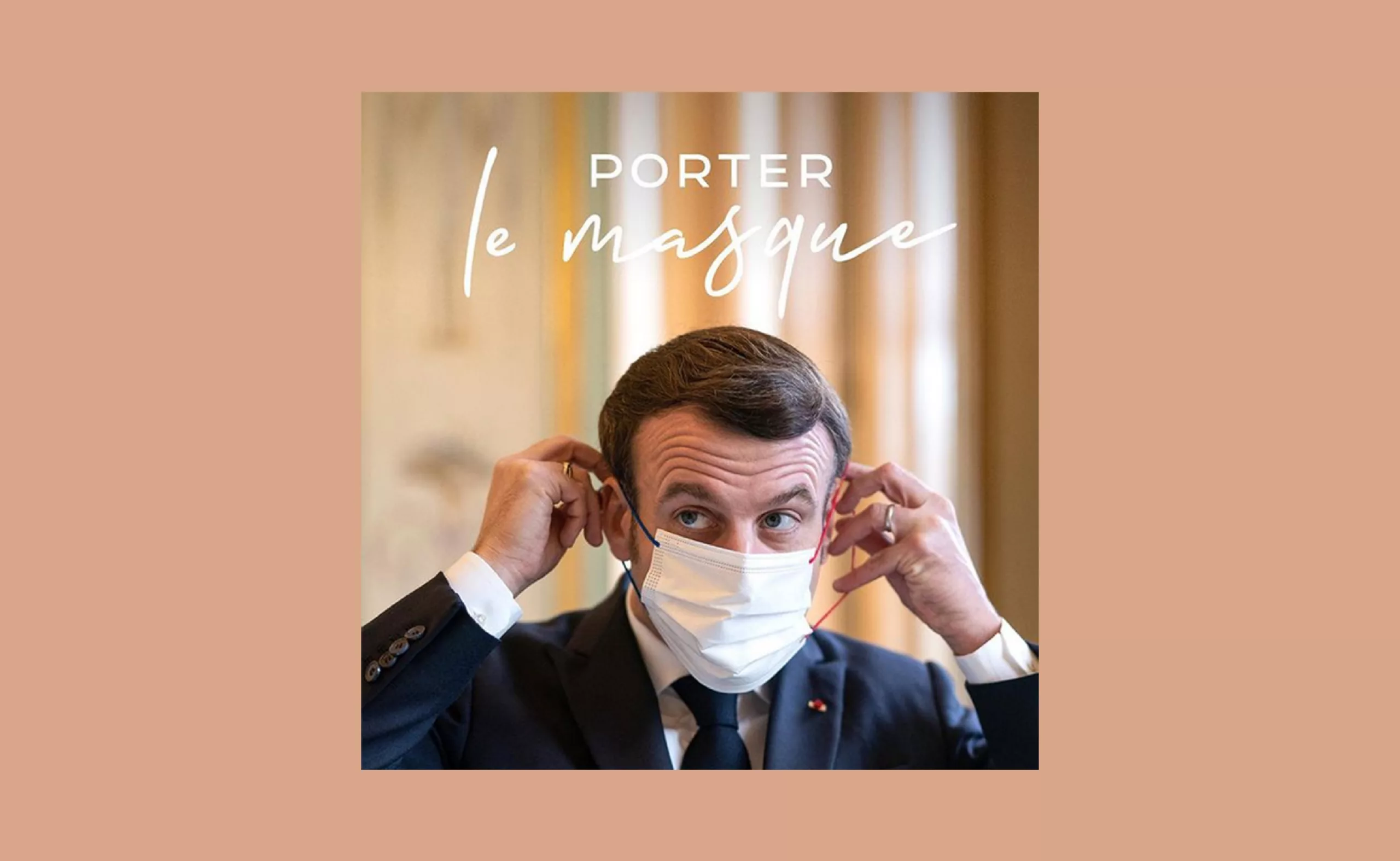

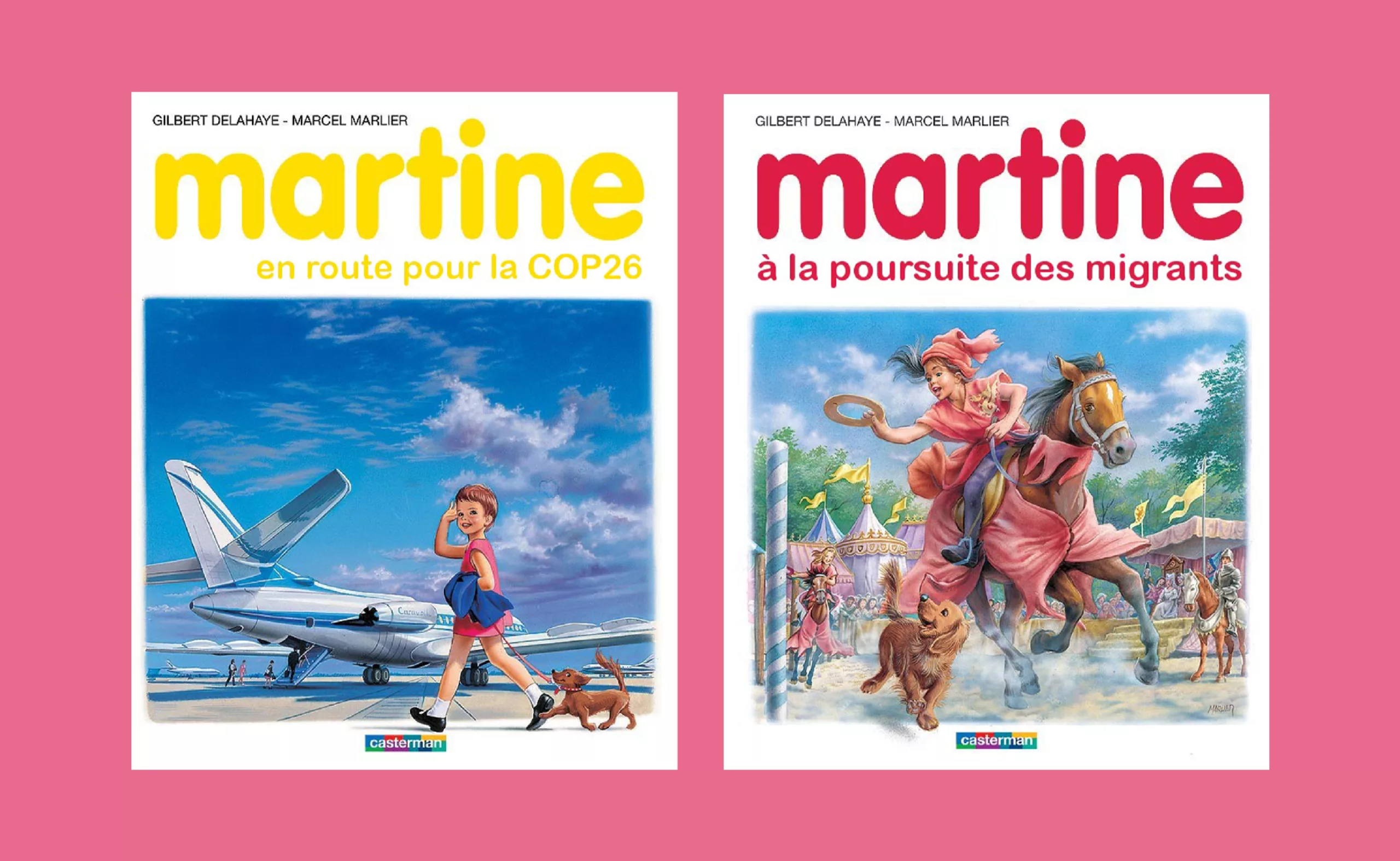
Going further than the simple diverting which is a system in itself (for example: reproducing a work of art with the means at hand like the #museumchallenge below) the meme starts from a unique and sometimes uninteresting or even ugly visual, adds a second sense of reading with text or another image that makes it mutate, and embroiders variations around this system. A detour can become a meme as long as it is reproducible and shared by all. The meme is thus at the same time a system (the detour) easily reproducible, a cultural language (which is inscribed in a precise context) and a wink to current events (here the covid, the cop21 and the Texan border guards).

A mutant graphic DNA
The word meme comes from the contraction of the words gene and mimicry, used by Richard Dawkins in 1976. Dawkins creates a parallel between genetics and culture, where information -the meme- circulates and mutates within a group and a particular environment. By dint of sharing, the variation leads to cross-references, interconnections (Godzilla vs Kong vs Dogue), creating new degrees of reading for an 8th degree humor. Like a gene mutating from one user to another, only the “strongest” memes survive.
In this graphic DNA, the image or text generally carries two distinct, often opposing messages, which give rise to a third that is often absurd, offbeat, or even reserved for insiders. Like any language, memes carry cultural symbolism that varies from country to country, subculture to subculture, and user group to user group.
The repetition of a meme also leads to a cognitive bias called the “simple exposure effect”: the more we are exposed to a stimulus, the more we tend to appreciate it because it becomes part of our environment and therefore reassuring. This is what brands do with advertisements and logos. We think of the image of Vladimir Putin bare-chested riding a bear, diverted with Putin on a T-Rex, Putin on a white shark, a golden eagle or even a meteorite. We grasp the virile power of the Russian president to whom we end up getting attached, while hiding his words and his politics. But if he tames the most ferocious beasts, the bear in the starting image also symbolizes Russia, turning the ode… into a finely concealed criticism (memes about public figures were actually banned in Russia in 2015, but have recently made a comeback).
A wild communication tool
It is interesting to make a comparison between memes and the graphic identities of brands or the branding of popular social movements, such as the yellow vests or #BlackLivesMatter. All three have graphic codes and systems, and create a language with their own cultural codes, aimed at a given population. Like a work of art or a visual identity, the meme is shared until it attracts the sympathy of the crowds. But unlike them, the meme is anonymous and is created by and for people, just like the identities of social movements. It is those who use it that make it mutate and survive in the world, creating their own rules of the game. Besides, any element can be hijacked and become a meme or a symbol of social movement.
To summarize, brand identities, social movement identities and memes can be distinguished as follows:
- Brand identity : planned / defined and mercantile purpose, controllable / protected brand, usage rights controlled by a single authority
- Social movement identity : created in a hurry / defined and unifying goal, uncontrollable / anonymous, shared rights of use
- Meme identity : unplanned / undefined and unifying purpose, uncontrollable / anonymous, shared usage rights
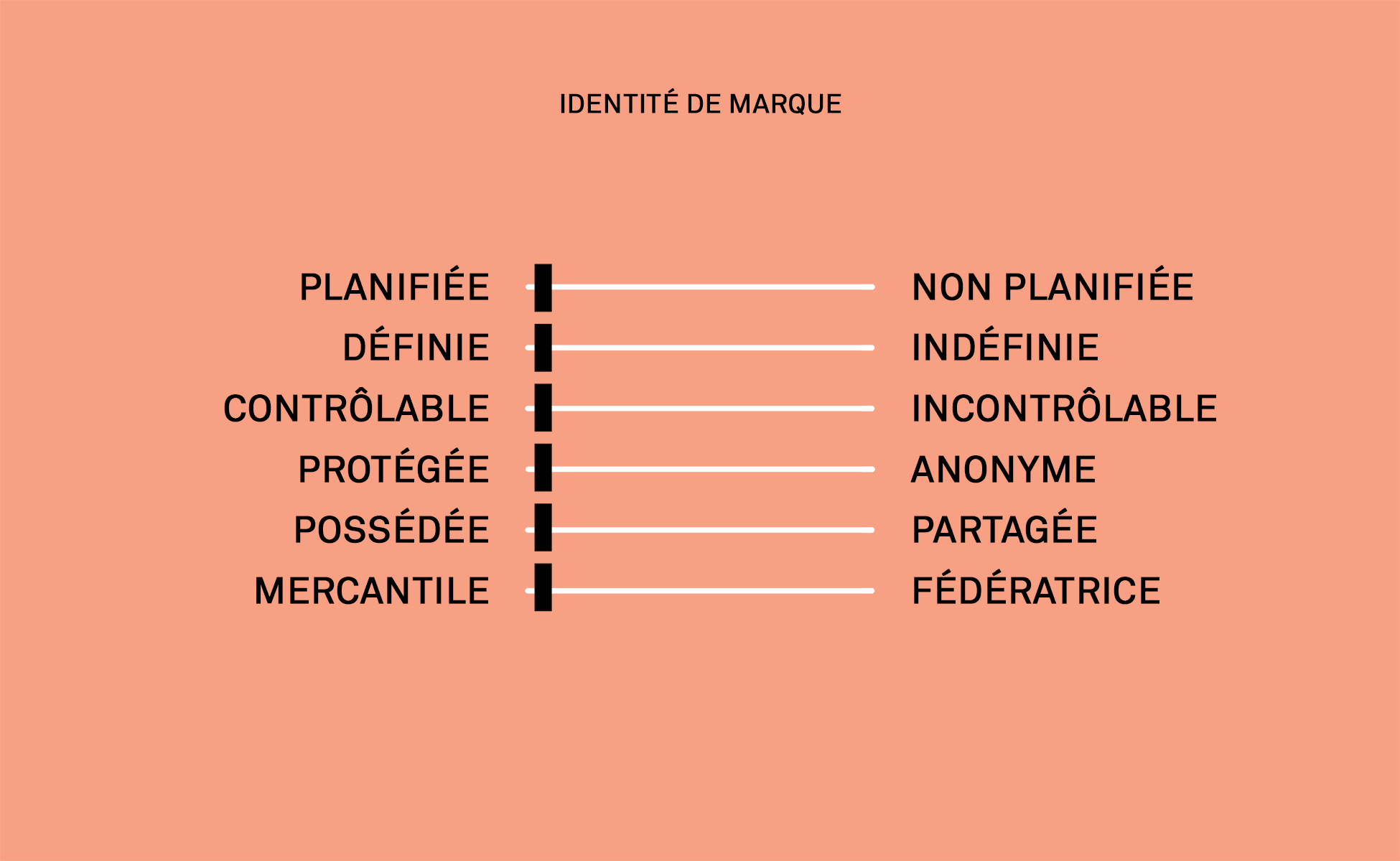
The meme is therefore the exact opposite of brand identity because it is wild, uncontrollable and usable by everyone. If it is federative like the branding of social movements, it is not created with a precise goal, except to make people laugh or divert a situation. And it is surely because it is also “fun and friendly” that communities appropriate the meme language they have created to such an extent. But any mutation can also create monsters !
Appropriation of memes by brands
Some brands do not hesitate to use the fame of memes and to appropriate them for commercial purposes. This is the case of Friskies which created an advertising campaign with Grumpy cat, the famous grumpy cat. Coca-Cola also used “Sucess Kid” with the message “we got this” in its advertising campaign broadcast during the super bowl. The little boy has also been used in advertising campaigns for Microsoft, Marriott, on cereal packages and at the White House. The cat or the child represents a huge marketing opportunity since it widens the target to all the meme lovers, who can go as far as collecting objects with the effigy of the meme in question.
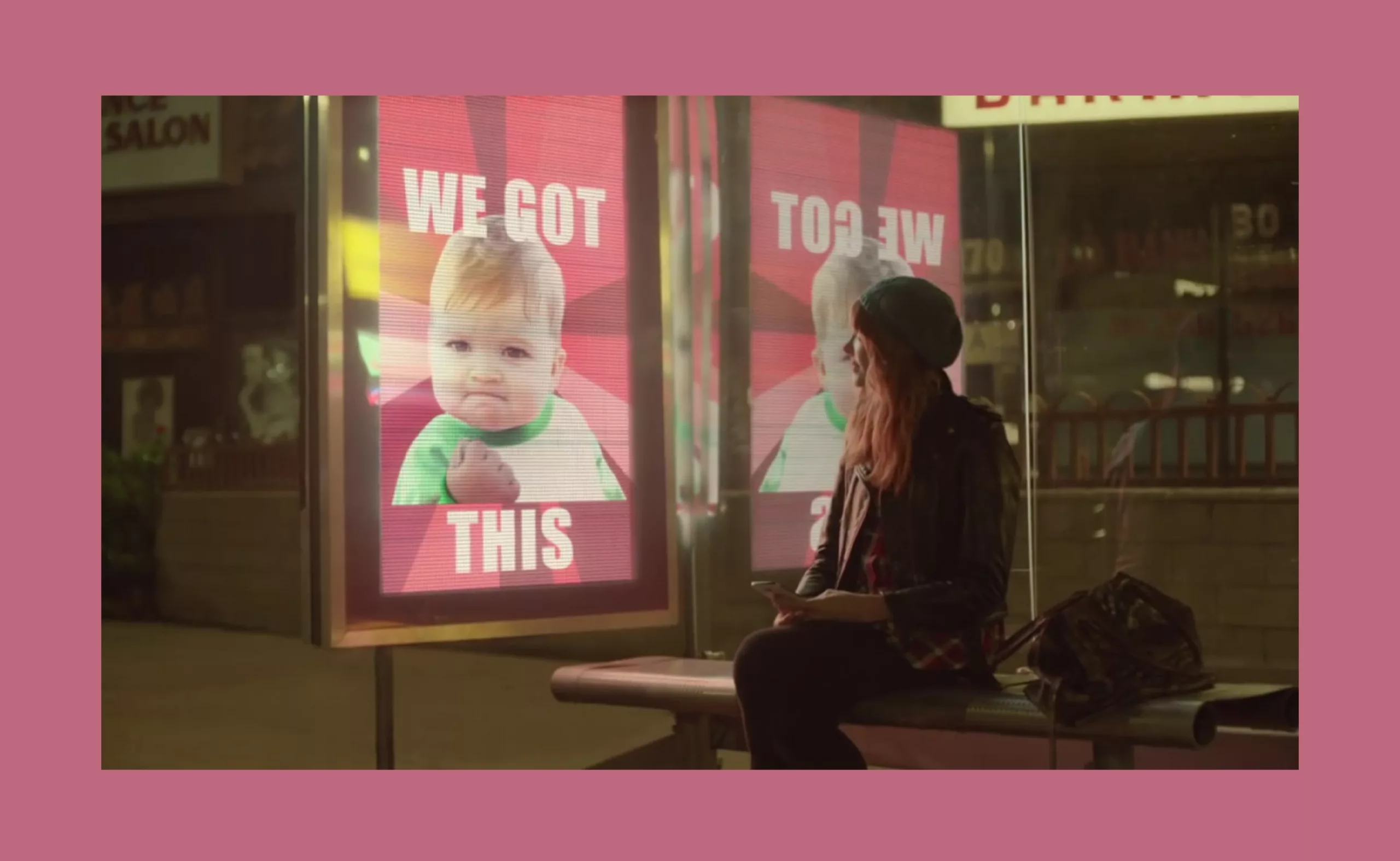
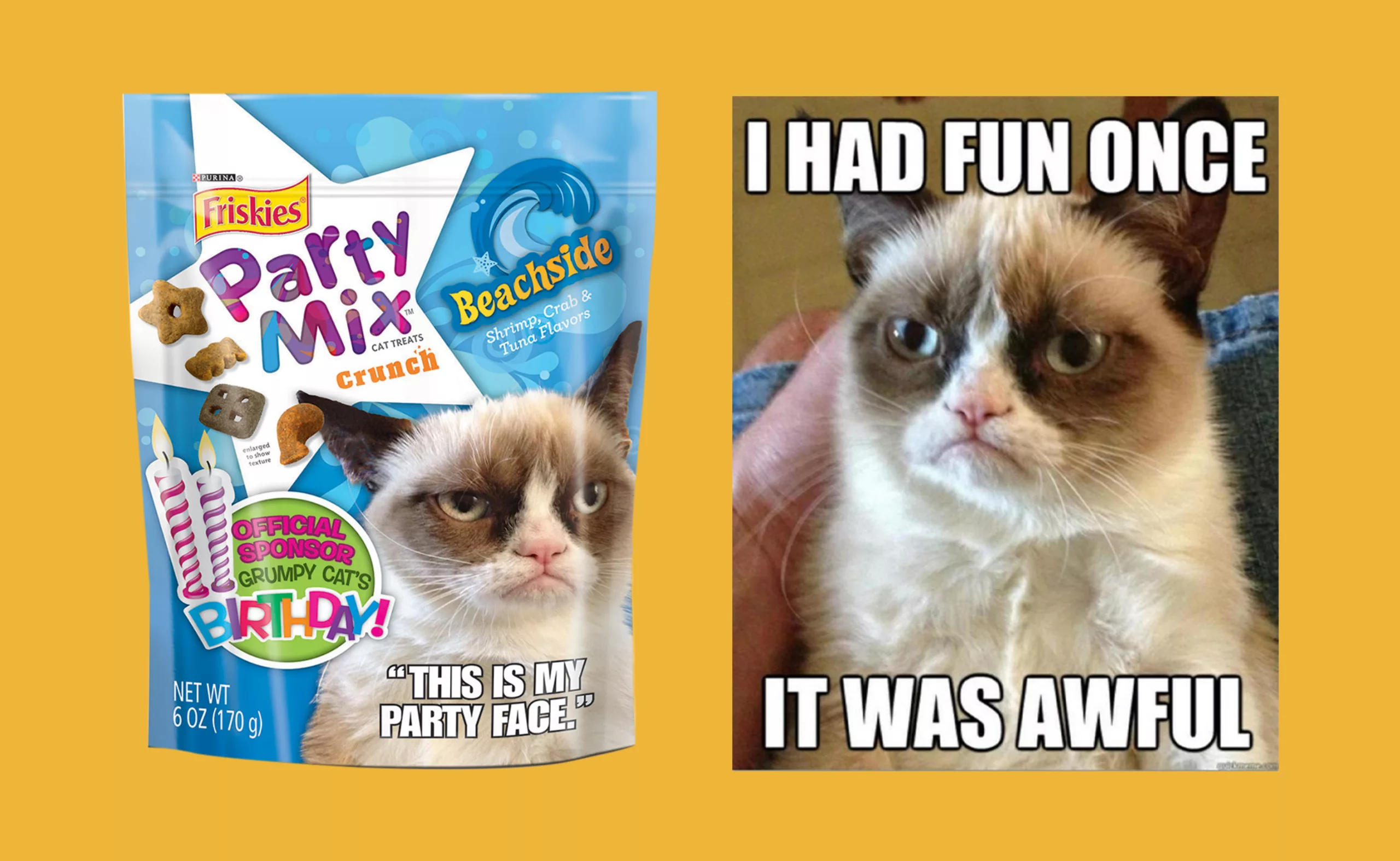
In these rare cases, the photos are not in the public domain: seeing their image become a very popular meme, the owner of the cat and the mother of the child have indeed registered a copyright on the original photo and are paid when a brand exploits it under license, or may even threaten to sue in the case of a use that does not seem appropriate to them (such as the use of success kid to finance the campaign of a politician with racist remarks). Most of them hire the same specialized agent, a certain Ben Lashes.
The meme, originally anonymous, harmless and belonging to everyone, can sometimes become a “popular work” and be used for commercial purposes, the opposite of its initial purpose. The young woman, better known as “disaster girl“, even registered an NFT (a kind of copyright for digital works) in the photo of her smiling at a burning house. The NFT was sold in cryptocurrency for almost $500,000… After that, this approach to turn just about everything into a source of income is very American. Indian or French memes, for example, are rarely if ever registered or exploited.
Propaganda tool of the digital age
While for many people memes are cute pictures of cats with funny text on them, they are in reality also a powerful propaganda tool to manipulate crowds, opinions and mindsets. A report from New Knowledge calls memes “the propaganda of the digital age”.
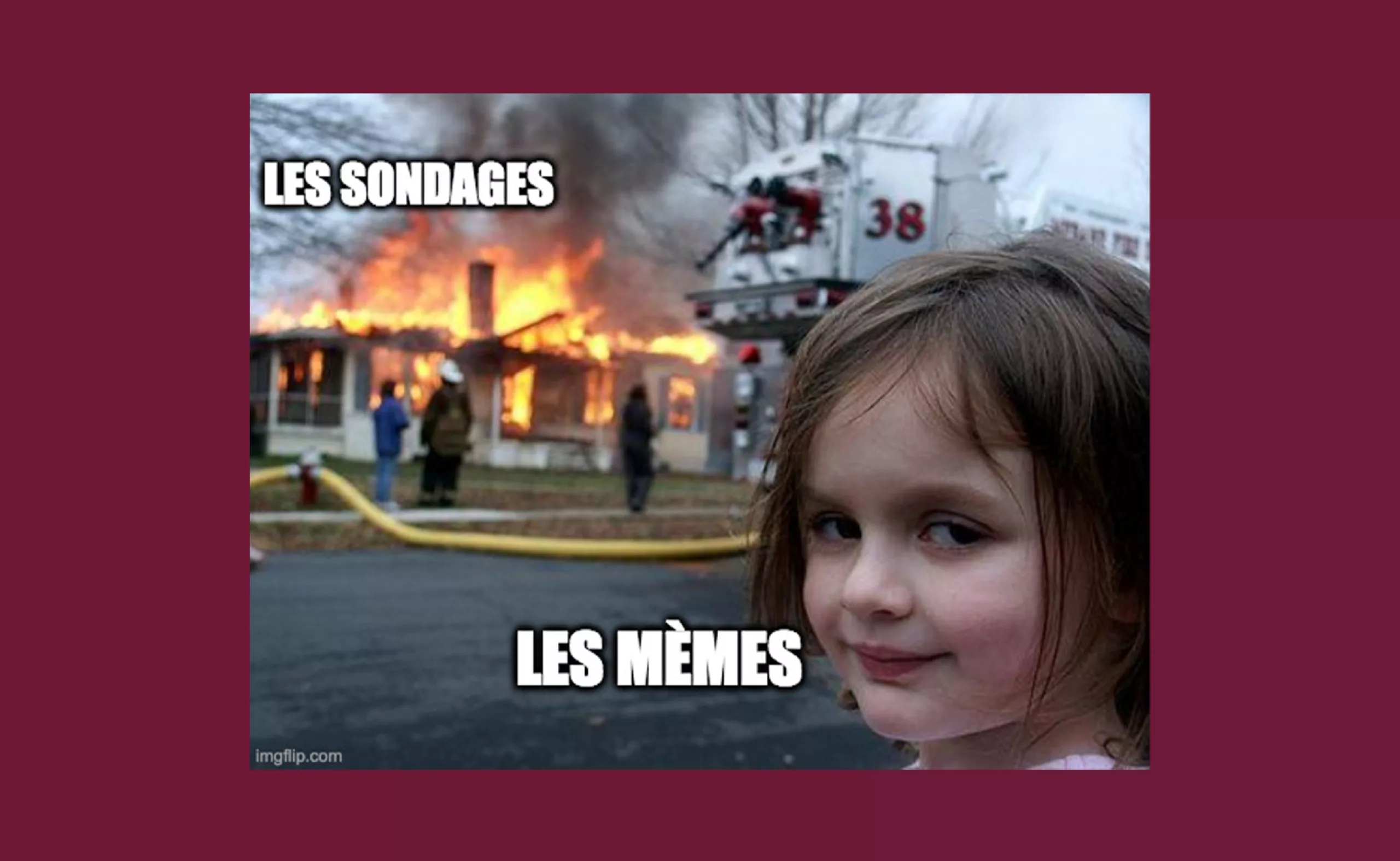
Memes have the ability to simplify an idea, a debate, a message, in a few words on a symbolic image. Because they appeal to popular cultural elements and provoke powerful cognitive biases, they instantly create a strong emotion in users, especially those who share the references. If you love -or hate- the comic sans ms, you won’t be able to remain indifferent to the Doge Coin’s slogan. You’ll either find it awesome or annoying.
The tactics of the great political hijacking
As soon as you use one of these symbols you are almost guaranteed to get sympathy from this community. Any hateful message put on a Doge or Grumpy Cat is likely to be re-shared and liked. Like brands, this is what political or opinion influencing groups like the IRA (Internet Research Agency), a very large Russian organization that works on the Internet, have understood very well.
These groups use memes and all their positive symbolism to spread propaganda, political or extremist messages (sometimes all three simultaneously). The association of a positive idea with a negative one encourages the viewer to either accept or reject both ideas together. And very often, it is the first case that operates. The meme requires a minimum effort of comprehension or can convey hidden meanings that are not perceptible at first reading, and can be re-shared in all sorts of ways. The cognitive biases of anchoring or confirmation that they raise mean that we retain the first piece of information that we see without checking its veracity, and ignoring other sources that affirm the opposite.
Other ways to misuse memes are to oversimplify a message. Shared on social networks, they contribute to radicalization and increase violent behavior. Memes shared on increasingly radical accounts (because of targeted algorithms that contribute to forging a single thought) contribute to generating real violence, notably towards Muslims in India, the Rohingya in Burma or even more globally towards any minority or opposition thought. Religious, social or political debates are thus summarized in a minimum of words, separating the good guys from the bad guys in a world without nuances.
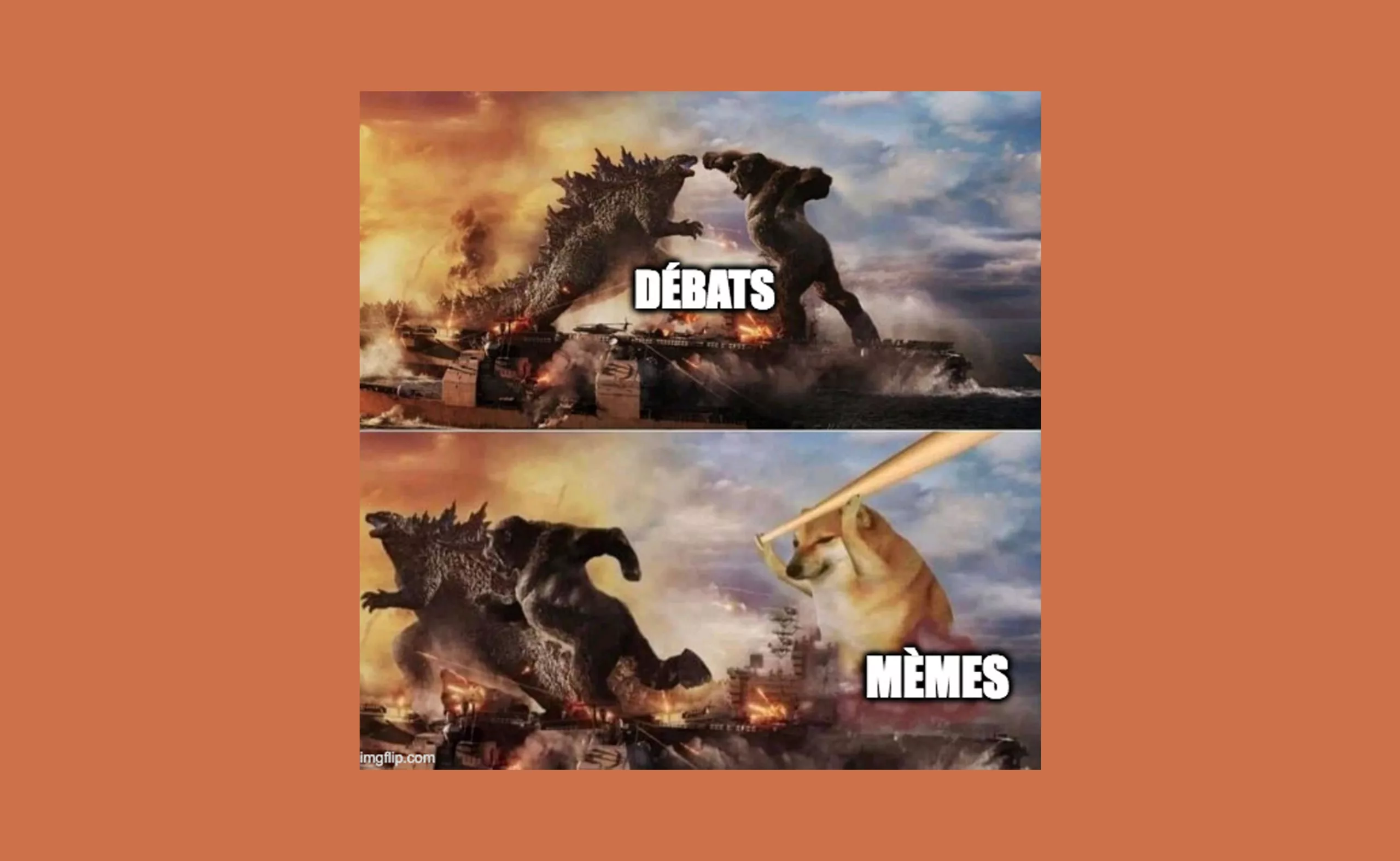
Real fights, false images and manipulations
In India, these techniques are practiced by the political party in power. The Hindu nationalist government has a whole network of paid or voluntary influencers and bots that can share fake news and hate speech (especially against Muslims) in a few seconds in the form of memes, or start trends on social networks. Through numerous WhatsApp groups, they are able to instantly reach 200,000,000 people by discrediting news in the media1. This has led to public lynchings of rare violence. The icing on the cake is that this type of psychological manipulation can be used to modify behavior to the point of making people vote against their own party! This is what happened in 2014 before the American presidential elections.
In 2014 the IRA (the Russian “troll factory”) helped to share massive patriotic or nationalistic messages in favor of Trump. Through fake accounts linked together on several social networks and shared en masse, the agency spread memes via 67,000 Facebook groups and more than 100,000 memes on Instagram addressed to minorities, patriots or white supremacists who received messages using their struggles and values to urge them to vote against Hillary or for Trump. Some posts manipulated users’ faith by sharing a message with a visual of Jesus right underneath with the caption “like if you have faith” or “keep scrolling if you don’t,” garnering almost 90,000 likes for pro-gun or anti-immigration comments.

France is not exempt from these meme-intoxications created by the IRA, as we have seen recently with photos (“that the media don’t want you to see”) showing fake montages of African or Middle Eastern countries supposedly looted by the French army, aiming to create indignation. The images crystallize a general malaise and use real claims to manipulate opinion with simplistic statements. We can expect to see more of this in the next presidential elections.
Jesters control the universe
But if the meme is the language of the people and it can also be used to spread messages of hate or exacerbate the flaws of society, it is above all a language that does not look very serious. Whoever speaks the meme is a geek, a troll, or a funny guy. Humor and play have often been a way to circumvent the forbidden or to go unnoticed. Divination tools like Tarot, for example, survived religious attacks because they were presented as simple games. Used, like memes, by initiates who knew the symbols, they continued to exist thanks to a coded language, transmitted directly. Under the guise of lightness, the insiders share the codes, incomprehensible to the majority.
And that’s exactly why Elon Musk uses them on his twitter account. The entrepreneur and creator of SpaceX uses memes not only because it’s cool and funny, but also to say shit to the big traditional institutions, and to make small crypto-currencies that didn’t interest many people take off. Until now, no one has taken the little jokers seriously (logical), and Musk intends to change that. Tesla’s cars are full of nods to geek culture or offbeat, from the 11 sound level to the farting cushion on the passenger seat, to the fact that they can be purchased in crypto-currencies (including Dogecoin), but they set the standard for electric (and overpriced) cars. Tesla’s brand story is partly based on this counterculture and jokes that are the source of its… serious success. If you’re an insider! And an insider in marketing language means a feeling of privilege, and therefore a strong relationship with the brand. This strategy is far from being laughable.
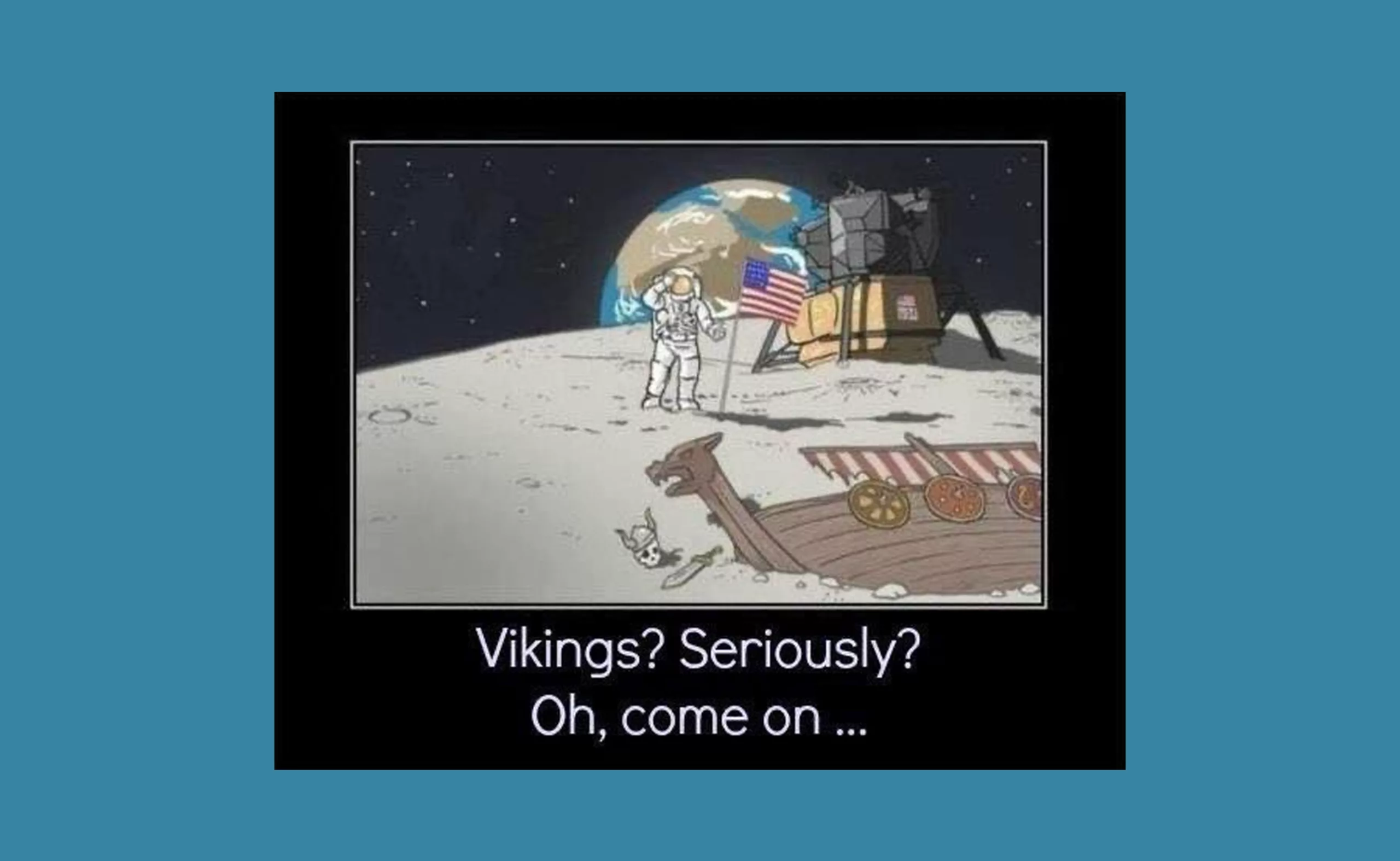
With a tweet like this to his 65 million followers, Elon Musk makes the price of Floki, a crypto-currency whose community calls itself “Vikings”, take a 20% jump within an hour. The uninitiated do not understand the meaning of this meme, the others follow the good words of the high priest. The reference to the moon is (apart from the obvious parallel with Musk’s SpaceX activities) inspired by the figurative financial expression to rocket, which means here that the currency is aiming for the moon, that it will take off high and strong. If Elon says so… To the moon is also the slogan of the Dogecoin that Musk is also constantly talking about, whose effigy is the meme of the dog of the same breed as Musk’s (which is also called Floki like the other crypto-currency, it’s all related), which uses the comic sans typo. Everything is obviously, at first glance, anything but credible!
Dogecoin was originally a joke to mock cripto-currencies, themselves created after the subprime crisis to break away from the dollar-based stock market system, and escape banking and state control. Who would have thought that this joke crypto-currency with the effigy of a dog from a meme, could capitalize 65 billion dollars? It is precisely because it is funny and quirky, seems anything but serious and speaks to insiders that it attracts the sympathy of user-consumers. Like the Tesla.
The derision makes people laugh, the meme is cute, people find it funny and feel part of an elite that understands these jokes, they buy, the media talks about it, the crypto-currency or the company gains notoriety, the price goes up, and the price effectively…. to the moon. By dint of talking and thinking meme, Elon Musk has become the king of memes and now controls the universe with his self-fulfilling prophecies.
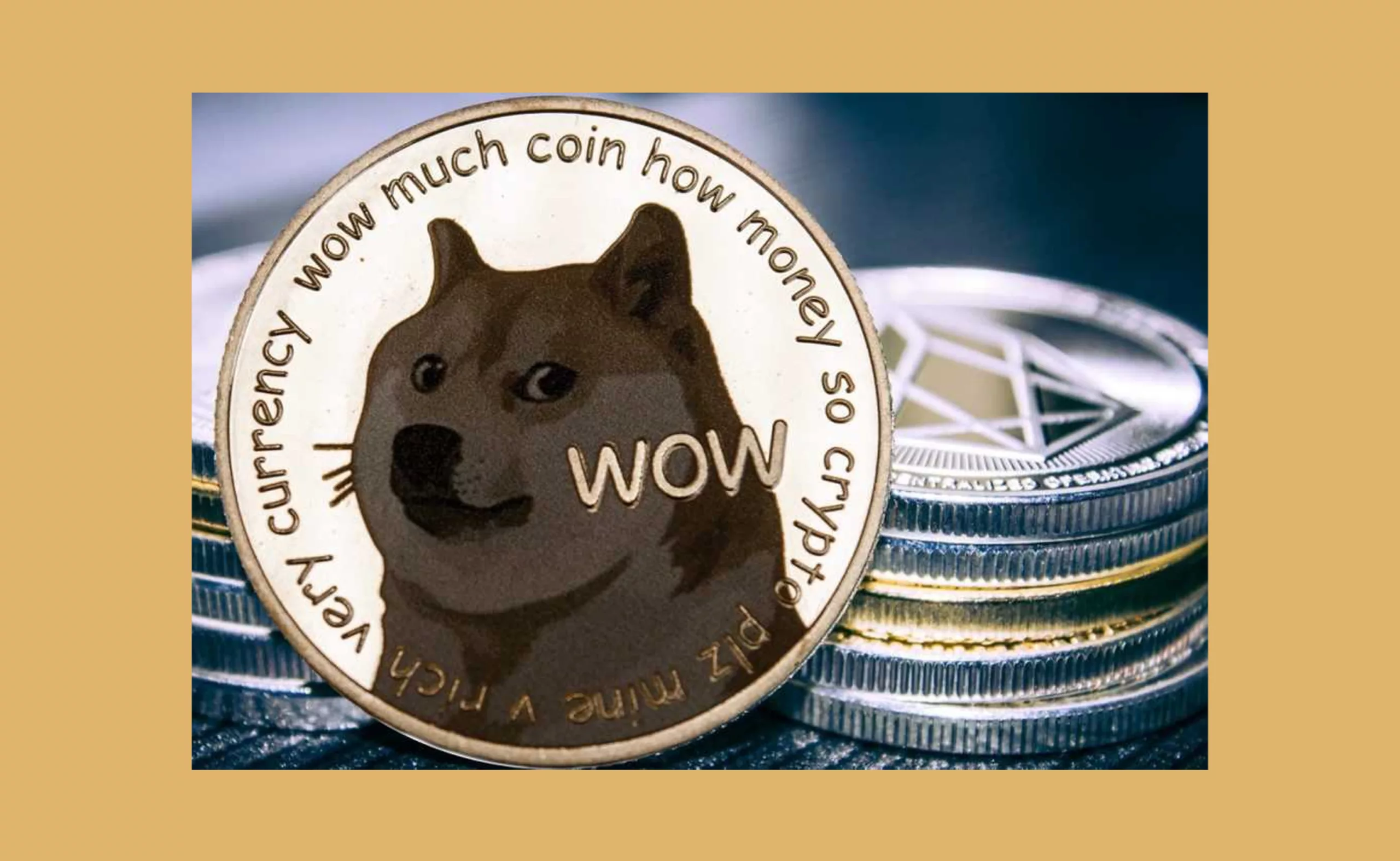
1 https://networkcultures.org/wp-content/uploads/2021/09/CriticalMemeReader-1.pdf p.198 – Thanks to Ajitesh for his help
